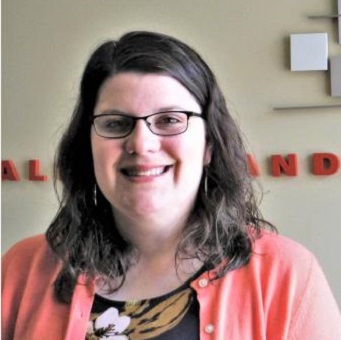The Financial Accounting Standards Board (FASB) has been working to improve the implementation and transition to the Current Expected Credit Losses (CECL) method of accounting since the method was introduced back in 2016. Over the years, the fact that the CECL model made the existing method of accounting for troubled debt restructurings (TDRs) a duplicate effort became more apparent. To address the issue, the FASB issued Accounting Standards Update (ASU) 2022-02 Financial Instruments—Credit Losses (Topic 326): Troubled Debt Restructurings and Vintage Disclosures earlier this year.
The ASU directly affects the CECL methodology, which will become effective for federally insured credit unions on January 1, 2023. Early adoption of the ASU is permitted; however, credit unions must adopt the CECL requirements under ASU 2016-13 first. For credit unions, being prepared for the CECL transition is imperative, which means understanding these changes is an important part of the process.
Recognition and Measurement Requirements
Under the old TDR model, a measurement of an expected loss is required when a specific loan is subject to a modification and determined to be a TDR; however, under the CECL method, a measurement of expected losses for all loans is reflected in the allowance for credit losses.
When loans are modified, credit unions do not need to determine whether the modification constitutes a concession to the borrower. However, the credit union will still need to evaluate whether the borrower is troubled financially, as those modifications now require new disclosures.
For modifications of loans for borrowers experiencing financial difficulties, credit unions are no longer required to use a discounted cash flow method for estimating the allowance, nor are they required to use the pre-modification effective interest rate if they continue to use the discounted cash flow method for calculating the allowance. Now, loans modified with borrowers experiencing financial difficulties will have an allowance calculated under the same CECL methodology as unmodified loans. So credit unions can apply a variety of methods to estimating such credit losses.
Modifications to loans made to troubled borrowers will now be accounted for and measured, as any other loan modification, according to the guidance in ASC 310-20-35. Credit unions must review modifications per the guidance in ASC 326-20 to determine if they represent a new loan or a continuation of the existing loan. But there will no longer be any accounting measurement distinctions for modifications based on the previous guidance, so credit unions are no longer permitted “to consider reasonably expected renewals, modifications, and extensions in determining the contractual life of an asset over which to estimate the allowance for credit losses.” However, there is no need to reverse the effects of historical credit management strategies from your credit union’s historical data in its CECL model.
Disclosure Requirements
Under the ASU, public business entities must disclose gross write-offs by vintage, but credit unions are considered non-public business entities. The ASU does set additional disclosure requirements for modifications of loans to troubled borrowers that include an interest rate reduction, principal forgiveness, a significant payment delay, or a term extension. For this purpose, covenant waivers and modifications of contingent acceleration clauses are not considered term extensions. And some loans are excluded from the disclosures, such as loans measured at fair value through earnings.
Quantitative and qualitative disclosures must be made by class of loan in each period for which a statement of income is presented and, among others, include:
- The types of modifications your credit union utilizes, including
- the total amortized cost basis of the modified loans for the period-end, and
- the percentage of loan modifications made to loans with borrowers experiencing financial difficulty relative to the total above.
- The financial effects of modifications by type, including
- information about the changes to the contractual terms, and
- as applicable, the incremental effect of principal forgiveness, or
- the reduction in weighted-average interest rates (versus a range) for interest rate reductions.
- Information on loan performance in the 12 months following a modification of a loan made to a borrower experiencing financial difficulty
- Qualitative information for each portfolio segment on how the credit union factors modifications and borrowers’ subsequent performance into determining the allowance for credit losses.
Under the ASU, insignificant delays in payment do not require disclosure; however, additional disclosures are required for loans with modifications made within the previous year that are in default in the period covered by a presented income statement. Additionally, credit unions must provide disclosures for loans that are restructured in more than one manner.
Transition
For credit unions that have already adopted CECL, the ASU is effective for fiscal years beginning after December 15, 2022, and interim periods within that fiscal year. Early adoption is permitted.
For entities that have not adopted CECL, the ASU will be effective concurrent with the adoption of CECL. Credit unions are required to make a prospective transition for the disclosure enhancements. When a credit union adopts the elimination of the TDR model, it may elect either a prospective adoption for modifications occurring after the effective date or a modified retrospective adoption, including a cumulative-effect adjustment to retained earnings.
Contact ARB
ARB’s Credit Union Advisory Services Team is here to help. We help credit unions understand, implement, and comply with new and evolving standards and regulations. If you have any questions or want to learn more about CECL and how this ASU could affect your credit union, contact ARB today.
by Nicole Davis, CPA, MBA

Nicole is a manager at ARB. She specializes in providing advisory, accounting, and attest services to credit unions, commercial businesses, auto dealerships, and nonprofit organizations.





